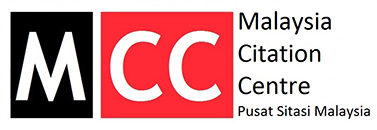Investigating A Power Tiller Vibration Transmissibility Using Diesel-Biodiesel Fuel Blends On Stationary Conditions
Abstract
The wide use of fossil fuel in internal combustion engine cause reduction in these fuel resources and also increase in greenhouse gasses and environmental pollution, for conquering these problems, so many researches have done for finding the renewable herbaceous fuel. Between these different kinds of fuel, biodiesel seems to be appropriate because of the nonexistence of air pollutions and the existence of similar trait with diesel fuel. In this research, vibration of 13hp power tiller in 5 levels of engine speed and 6 levels of consuming fuel blends for investigating the power tiller engine vibration behavior and the vibration transmissibility. Results showed that vibration transmissibility is decreased by increasing the engine speed. The maximum of the vibration transmissibility is happened in B20 and B5 and minimum of it is happened in B15 and D respectively. Also it is observed that the amount of vibration acceleration in longitudinal axis is much more than other two axes. The vibration acceleration value, in the frequency range of 8 to 100 Hz was higher than a dangerous frequency range of hand-arm vibration transmission and the total weighted acceleration has the maximum value at the frequency of 20, 31.5, 40 and 63 Hz with the vibration amplitude reach up to 20, 12.6, 18.6 and 40 m/s2 respectively. The best engine speed are 1400, 1600 and 2000 rpm, in this Engine speed using the B20 and B5 seems appropriate.
Downloads
Downloads
Published
How to Cite
Issue
Section
License
JMET Copyright Principles
JMET seeks to retain copyright of the articles it publishes, without the authors giving up their right to use their own material.
Originality
The manuscript is neither been published before, nor is it under consideration for publication in any other journals. It contains no matter that is scandalous, obscene, libelous or otherwise contrary to law.
Terms of Acceptance
When the article is accepted for publication, the authors shall hereby agree to transfer to the Journal of Mechanical Engineering and Technology, all rights, including those pertaining to electronic forms and transmissions, under existing copyright laws, except for the following, which the author(s) specifically retain(s):
All proprietary right other than copyright, such as patent rights.
- The right to make further copies of all or part of the published article for my/our use in classroom teaching.
- The right to reuse all or part of this material in a compilation of my/our own works or in a textbook of which I/we am/are the author(s).
- The right to make copies of the published work for internal distribution within the institution that employs me/us.
The authors agree that copies made under these circumstances will continue to carry the copyright notice that appeared in the original published work. The authors agree to inform any co-authors, if any, of the above terms. The authors certify that they have obtained written permission for the use of text, tables, and/or illustrations from any copyrighted source(s), and they agree to supply such written permission(s) to Journal of Mechanical Engineering and Technology upon request.





